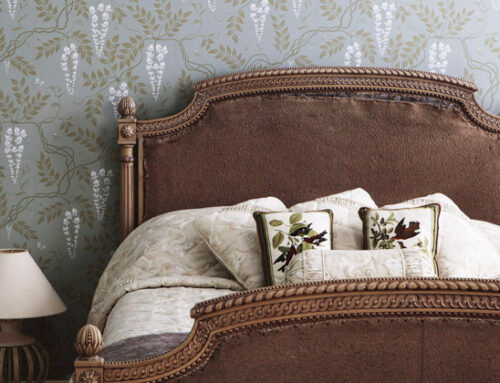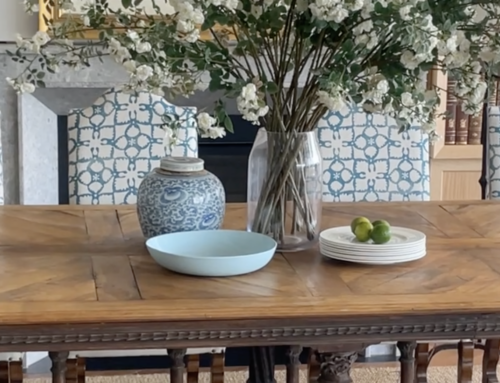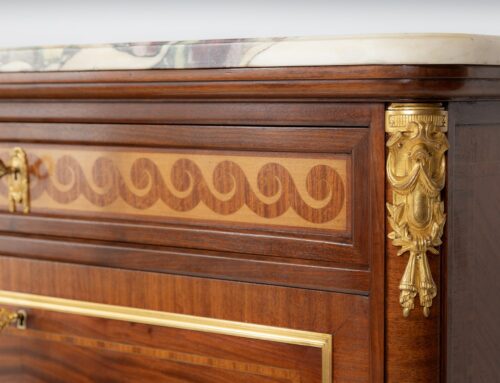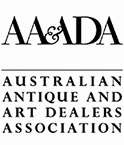Alphonse Tahan Furniture
This magnificent sewing table was produced by Alphonse Tahan, official master cabinet maker to Napoleon III. Famous for his execution of exquisite furniture and jewelry boxes, we’re excited to reveal that an article created by the man himself has just landed in our store.
This 19th century French marquetry sewing box is a stunning example of Tahan’s beautiful craftsmanship. The surface is inlaid with the highest quality inlays in the form of bow and arrows, flowers and scrolls and in a varying array of beautiful colours. The marquetry panel is bordered by kingwood crossbandings and ormolu mount. The lid lifts to reveal a stunning quality polished and compartmentalised interior, fitted with a mirror and engraved ormolu hinges and lock signed ‘Tahan Paris’.
Alphonse Tahan – The Man Himself
Born in Belgium in 1830 and by the age of 19, he had opened a shop at 30 Rue de la Paix in the heart of Paris. Tahan grew to prominence as a craftsman known for creating beautiful and varied pieces, from the elaborate to the simple. His work, typical of the Second Empire, combined a classical formality reminiscent of the late 1700s with the lavish use of costly materials.
He used many techniques including using pieces of cast bronze to simulate bamboo. Tahan eventually caught the eye of Napoleon’s wife, Empress Eugenie, and he became the official “ebeniste” (cabinetmaker) to the Emperor and his wife. The Empress was considered a trend-setter; a great beauty herself, she had an eye for things that were aesthetically pleasing. Her regard for Tahan’s workshop led to great demand for his furniture and smaller items, such as this sewing box.
His pieces became sought after by the upper echelon of Paris society. He moved his shop to Boulevard des Italiens in 1978, but died a short two years later. His works were in demand right across Europe, where they were exhibited at The London Crystal Palace Exhibition in 1851, and the Paris Exposition Universelle in 1855 and received medals on both occasions.
Tahan’s son, Jean-Pierre-Alexandre Tahan, carried on his father’s legacy.
Click to read more articles about French Antiques







